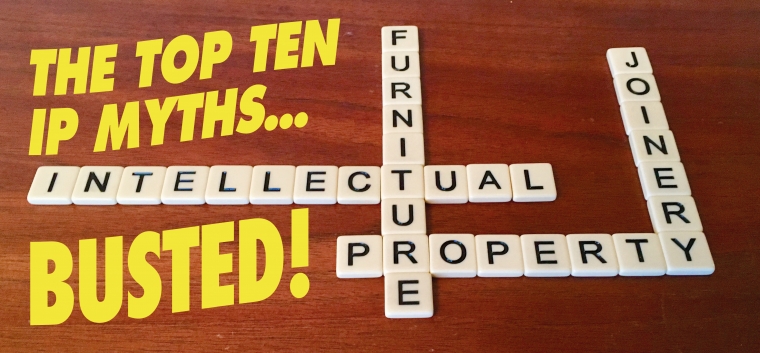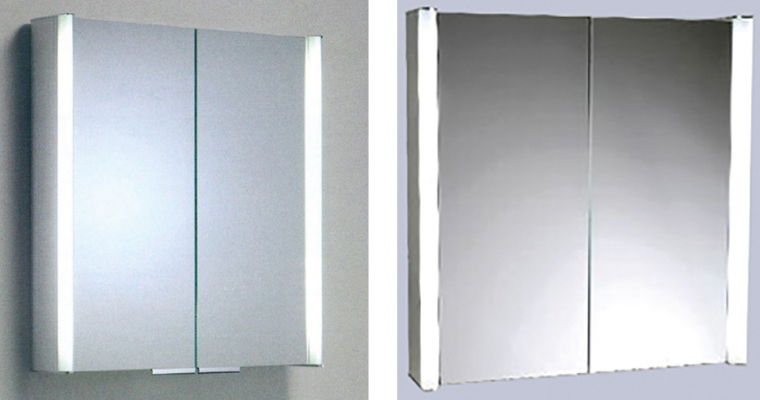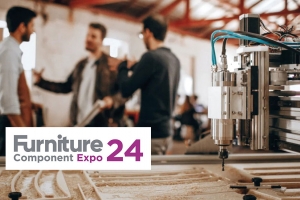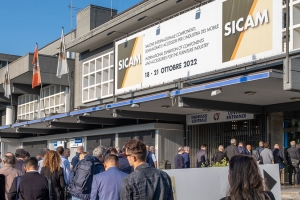Jim Pearson of Abel & Imray, a firm of UK and European patent attorneys and trade mark attorneys, busts some of the myths that still surround the subject of intellectual property in this last in a series of articles written on behalf of the Chartered Institute of Patent Attorneys (CIPA).

Over the last five articles, we’ve covered the basics of IP in the UK and abroad, how IP can make and save you money, why ownership of IP is important to get right, and issues surrounding enforcement/infringement of IP. As a reminder of some of the issues we’ve already covered and to introduce a few new ones, this last article aims to put right some of the more common myths surrounding IP.
Myth One
- Copyright needs to be registered in the UK for it to be useful/enforceable.
Copyright arises automatically through the creation of a work. If ever you need to assert your copyright against a third party, you will need to prove that you (or your company) owns the relevant rights.
This will typically include evidence of creation of the original work. Over the years, practitioners have advised sending material to yourself in a tamper-proof envelope, lodging materials with your bank, your accountant, your lawyer - even your patent attorney! - or registering the work with an appropriate independent body offering that service.
There are now online providers offering (informal/unofficial) copyright registration services in the UK. In the US, there is a requirement to register copyright material before taking legal action against a third party for copyright infringement. However, in the UK there is no legal requirement to register copyright in order for it to exist, nor is there an official register of copyright works in the UK - see www.gov.uk/copyright.
It is best practice to keep good records of the creation of important copyright works (and other IP rights for that matter), in case evidence is ever needed in future. Keeping original dated design documents, as a minimum, is strongly advised.
There may be benefits in taking further steps, such as those described above, but there is no legal requirement to do so. Take advice on the matter if you’re not sure or at least weigh up the costs versus the benefits of registering copyright in the ways described above.
Myth Two
- You can’t patent methods of manufacture.
If the method of manufacture is novel and involves an inventive step over what’s already in the public domain then it will be patentable. The requirement for an inventive step is just that. An inventive leap is not required. For something to be inventive, it must not be completely obvious.
A new method of manufacture will be different over the closest comparable previously known method in one or more ways, providing one or more differences.
If those one or more differences represent a useful or beneficial improvement, then there will normally be ways to argue that those differences represent an inventive step and obtain useful patent protection.
Myth Three
- If you’ve failed to keep something secret you won’t now be able to protect it.
It is true that if you’ve failed to keep something secret you won’t now be able to obtain a valid patent in the UK that covers what you’ve previously disclosed non-confidentially. However, protection in other countries may still be possible.
Certain countries, including the US for example, provide a grace period, typically of 12 months. Provided that a patent application is filed within the grace period in such countries, the prior disclosure by the patent applicant won’t count against the patent application (unlike the situation in the UK).
It is also worth remembering that UK and EU registered designs can be validly filed within such a 12-month grace period.
Myth Four
- Patents are always the best form of IP.
Patents protect new technology and can provide valuable monopoly rights over innovative concepts. However, patents can be expensive and require full disclosure (and publication) of all the new things that make the technology clever. There are alternatives to patents that are often better for a company.
Know-how, when recognised as such and kept confidential in the form of trade secrets, can be a powerful way of retaining valuable information inside a company. Trade secrets require careful management, but can provide cost-effective protection forever (patents typically last for no longer than 20 years from the filing date).
Registered designs protect the appearance of a product, and aside from the product itself, cover things such as packaging, get-up, graphics, and surface decoration. Registered designs last up to 25 years from registration, again potentially providing monopoly rights that last longer than a patent could.
The process for registration is generally quick and straightforward and therefore not as costly, or time-consuming, as obtaining a patent, which will typically undergo rigorous examination before eventually being granted, typically several years after the original filing date.
Myth Five
- Most of my sales are abroad so a UK patent won’t be of use to me
A UK patent for an innovative product won’t stop someone making the patented product in France or selling it in France. It will however facilitate blocking of importation of such foreign goods into the UK. It will also enable you to stop manufacturing in the UK by the competition even if the sales will be abroad.
If your sales abroad are generating profit that is taxed in the UK, then the corporation tax paid for such profits can be significantly reduced under the UK’s Patent Box tax regime. It doesn’t matter if the sales are abroad, although there are other requirements that a company needs to be aware of – see https://www.gov.uk/guidance/corporation-tax-the-patent-box.
If you’re unable to access the market in the UK, perhaps other companies have a better prospect. Could such companies licence the UK patent from you in return for royalty payments?
Myth Six
- Obtaining IP protection outside the UK is prohibitively expensive
Figures of £100k+ are often cited for the costs of adequately protecting an innovation internationally. Such figures are typically quoted for the life-time cost (over 20 years) of obtaining and maintaining patent protection in several European and non-European countries.
Such extensive and long-term protection is often not appropriate for a UK SME looking to protect its interests in a few countries for the short-term. By way of example, it is possible – even with professional fees included – to obtain five years of registered design protection that will protect against copying of a product, across the whole of the EU, for less than £1k.
Myth Seven
- I’ve paid someone to do something for me, so I own the IP
For anyone not being an employee of your company, if there’s no agreement in place, any rights (such as copyright, unregistered design right and patent rights) resulting from the work done by others will typically be owned by them or their employer not you/your company.
This can be a pain if a designer has created a new logo, website content or the like and you don’t own the relevant rights, but can be very bad news if patent or registered design rights are of interest and one or more of the contributors own rights that your company needs in order to obtain valid protection.
Myth Eight
- Enforcement of IP is so expensive there’s no point in getting involved in the system
If your company needs to take someone to court for infringing a patent or other IP right, there will be significant costs, typically running into hundreds of thousands of pounds if a high-value case has to be taken all the way to a final judgement.
However, the vast majority of IP disputes never get anywhere near a court-room. Most IP disputes can be dealt with via negotiation or mediation and without the need for formal court proceedings. There are also IP insurance products available – see www.gov.uk/guidance/intellectual-property-insurance for further guidance.
We featured Roper Rhodes, one of the UK’s leading independent suppliers of bathroom furniture and products, in an earlier article to illustrate how Roper Rhodes was able to enforce its IP rights against a competitor who had copied its Ascension cabinet. Without going anywhere near a court, Roper Rhodes enjoyed a resounding success in the matter with the following remedies:
• product withdrawn
• remaining stock returned to China
• £6k contribution to costs
• list of customers supplied with the product to date (not that many as it happened).

Roper Rhodes’s “Ascension” cabinet (left) beside the competitor’s product (right)
Myth Nine
• Brexit is going to make pan-European IP issues a total nightmare
Obtaining a European patent is administered by the European Patent Office under the European Patent Convention. The European Patent Office and the European Patent Convention will not be affected by the UK withdrawing from the EU, so it will be business as usual.
As for EU-governed IP rights such as EU trade marks and EU registered designs, there will be changes. It is now as clear as it can be, in advance of finally agreed legislation, that the owners of such EU trade marks and designs will continue to enjoy full protection in the UK following Brexit.
For further information and updates on Brexit and IP, visit: www.cipa.org.uk/policy-and-news/brexit-updates and www.citma.org.uk/membership/brexit/brexit.
Myth Ten
- It’s more cost-effective to do IP without the help of a registered patent attorney
We’ve previously discussed how IP can be financially beneficial in various ways, but getting that benefit out does require time, skill and effort to be put in. If you want a valuable asset from your IP, you will need to invest in it and use a professional, whether that’s a patent attorney (see www.cipa.org.uk/find-a-patent-attorney) or a trade mark attorney (www.citma.org.uk/membership/members_search).
An IP right grants the owner exclusivity over certain subject matter for a period of time in certain territories. For example, if a worktop manufacturer creates a number of distinctive images for use as surface decoration on worktops and registers those as design registrations in the UK, no other party can then make or sell in the UK identical or similar designs without infringing the design registrations.
Competition in relation to the suite of distinctive designs can be limited as competitors are deterred from producing something similar, creating greater demand and enabling the owner of the registered designs to charge a premium for the related products.
If however, the IP right has been obtained without the assistance of a patent attorney/trade mark attorney, there is a significant chance that an informed competitor will be able to find a deficiency in the IP right that will provide a means to work-around the IP right or invalidate the IP right.
Licensing IP to third parties in exchange for royalty payments will only succeed if the strength of the IP is respected by the third party. Without robust IP rights in place, obtained with the assistance of a qualified attorney, the prospects of obtaining healthy licensing revenue will be greatly diminished.
When a company is seeking new investment or looking to sell off a part or whole of the business, the protection afforded by the intellectual property rights owned by the business can be seen as valuable assets.
If the company has created innovative technology or distinctive brands or exciting products, an investor will typically want to see that such innovative and creative work is properly captured and protected by strong IP rights – and will be more readily convinced of this from the outset if it is seen that IP attorneys have been used to obtain the IP rights.
It is unlikely that the IP would have featured so strongly in Ammique Limited’s recent and successful crowd-funding investment round, had they not had professional help in obtaining their IP assets.
It will be seen that Ammique’s IP featured as a significant part of their pitch – see www.crowdcube.com/ammique and https://www.crowdcube.com/companies/ammique-ltd for further details. Investors will have been reassured that Ammique, with help from both patent attorneys and trade mark attorneys, secured valuable protection for their innovations, providing exclusivity over branding as well as the technology behind their product.
Conclusion
Obtaining and registering IP is not always a cheap process but can pay dividends in the long term. If an IP asset is not going to enhance the value of your company you shouldn’t be maintaining it.
On the other hand if you want IP in your business to be one of the valuable assets of the company, you should be looking to invest now to reap the rewards in the future. It is no surprise to learn that some of the most successful businesses in today’s economy are those that have historically invested in their IP and continue to do so.
For further information on any of the points discussed, or have a query on any intellectual property matter, Jim would be happy to assist you and can be contacted at jim.pearson@abelimray.com.
IP – a reminder of the basics
• Trade secrets – a way of protecting valuable knowhow
• Patents – protect technical innovations
• Designs – protect the 2D/3D shape or appearance of an article or surface decoration
• Trade marks – protect brands, company names, logos and the like
• Copyright – automatically protects against the copying of original texts, graphic works, photos, software and the like by others










